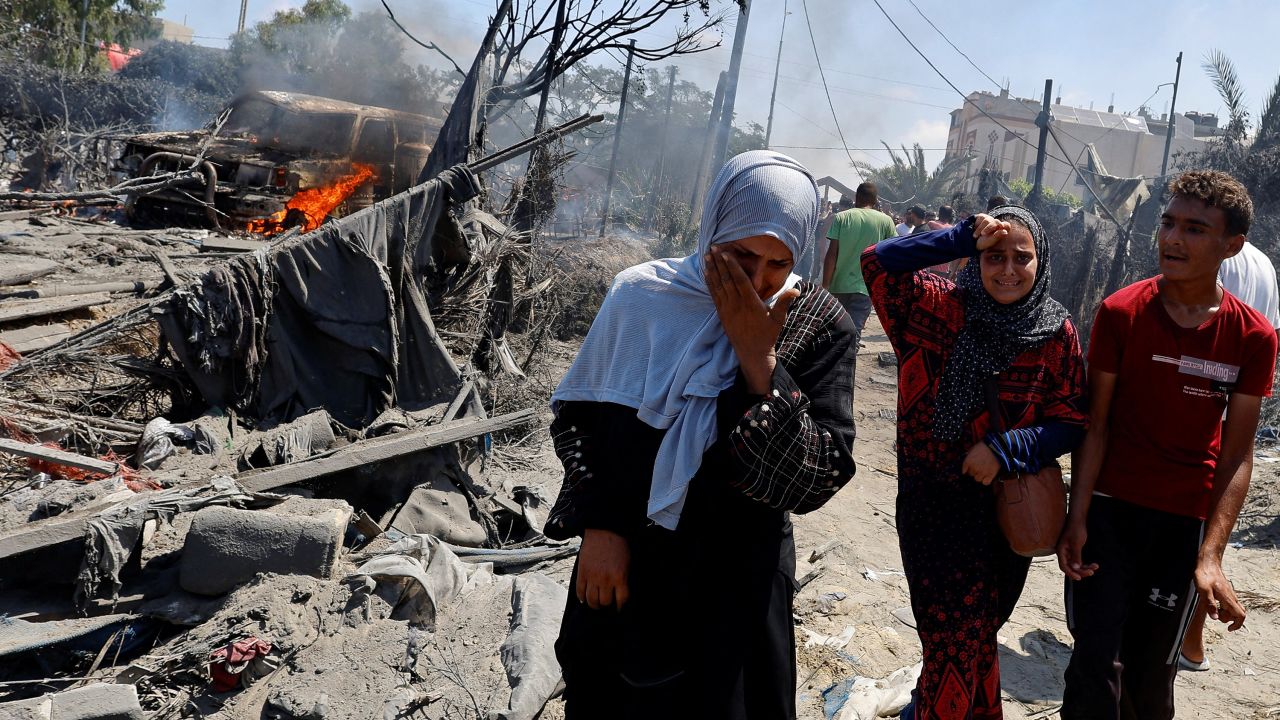
NGOCSTIP – Khan Younis, once a bustling city in the Gaza Strip, now stands in near-total ruin. The area, already devastated by weeks of conflict, has been rendered uninhabitable following relentless bombardments and systematic destruction. Civilians who once called Khan Younis home now wander through crumbled streets in search of family, belongings, or simply shelter. With buildings turned to dust and basic infrastructure obliterated, families are forced to survive without access to water, food, or electricity.
Children as young as eight are seen walking alone amid the rubble with empty expressions and no direction. In many cases, entire households are missing or buried beneath collapsed homes. The city is not only unsafe but actively hostile to life, with unexploded ordnance and crumbling structures creating a deadly environment. The human toll of this devastation is immeasurable, and survivors must navigate this post-apocalyptic landscape with no relief in sight and no place left to escape.
As pressure mounts in Rafah due to the looming threat of ground offensive, the displaced population is being forced toward Khan Younis. This forced movement has sparked outrage among humanitarian organizations as Khan Younis itself is far from capable of hosting additional civilians. Already destroyed and filled with dangerous remnants of war, the area cannot meet even the most basic requirements of safe relocation. The buildings still standing are fragile and at constant risk of collapse.
Access to clean water, medical care, and secure shelter remains virtually nonexistent. Families arriving in Khan Younis from Rafah do so with the false hope of safety, only to find conditions just as dire or worse. The psychological trauma deepens as people revisit the ruins of their homes, hoping to recover fragments of their lives, and instead encounter desolation. Moving people into this environment not only defies logic but violates core principles of international humanitarian law.
In Rafah, shelters provide less than one square meter of space per displaced person, exposing the breakdown of humanitarian infrastructure. The crisis grows worse as no one offers viable options for safe evacuation or protection. Overcrowded and poorly equipped facilities fail to meet even the most basic needs such as sanitation and healthcare. Families sleep outdoors or among rubble, using only plastic sheets or thin blankets for cover. Aid workers struggle to respond as the population increases daily and conditions deteriorate rapidly. Decision-makers ignore urgent pleas for support while civilians face the consequences in real time.
The hope for relocation has become a cruel illusion. There is nowhere to go. Khan Younis, previously suggested as a destination, is no longer viable. People returning to what remains of their hometowns find nothing but dangerous ruins. The collapse of civil order and humanitarian access has left communities without support. Aid organizations are unable to reach those most in need due to blocked routes and ongoing conflict. As conditions worsen, the suffering becomes more widespread and more impossible to ignore.
“Read more: Fall Just Hit Your Taste Buds: Starbucks Brings Back the Iconic Pumpkin Spice Latte!”
Danger is now embedded in the very ground of Khan Younis. The city is littered with unexploded ordnance that poses a fatal risk to residents, especially children who unknowingly wander through dangerous zones. Schools and public buildings, which once served as places of safety, are now unstable ruins with cracks, leaning walls, and fallen ceilings. No corner of the city is safe for habitation or refuge.
Humanitarian workers who have visited the site in recent weeks report widespread destruction and say the conditions required for safe evacuation simply do not exist. It is not just physical danger that threatens lives, but the complete lack of services. Hospitals are damaged or non-functional. Roads are blocked or destroyed. Communication is sporadic at best. In this environment, even the act of seeking help becomes life-threatening. Civilians cannot be expected to survive or relocate under such conditions. The situation is far beyond a crisis. It is a collapse.
The humanitarian crisis in Gaza continues to worsen as suffering spreads across the region. Explosive weapons tear through densely populated areas and cause massive destruction and civilian deaths. Armed groups and military forces intensify attacks without regard for safety zones. Civilians flee repeatedly, moving from one devastated area to another with no shelter or supplies. Roadblocks and violence prevent aid convoys from reaching those in need. Humanitarian workers face deadly threats while attempting to deliver critical assistance.
The conflict undermines the ability to follow international humanitarian law. Leaders must demand an immediate ceasefire to stop further loss of life. Only urgent and coordinated action can bring relief to the population. Authorities must protect civilians and open access for humanitarian organizations to operate safely. Continued fighting will only increase the devastation. A ceasefire now offers the only way forward to meet urgent needs and stop the suffering from spiraling further out of control.